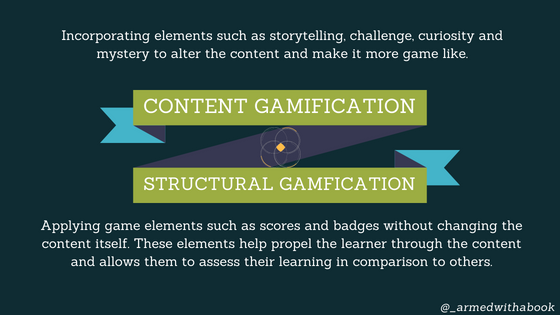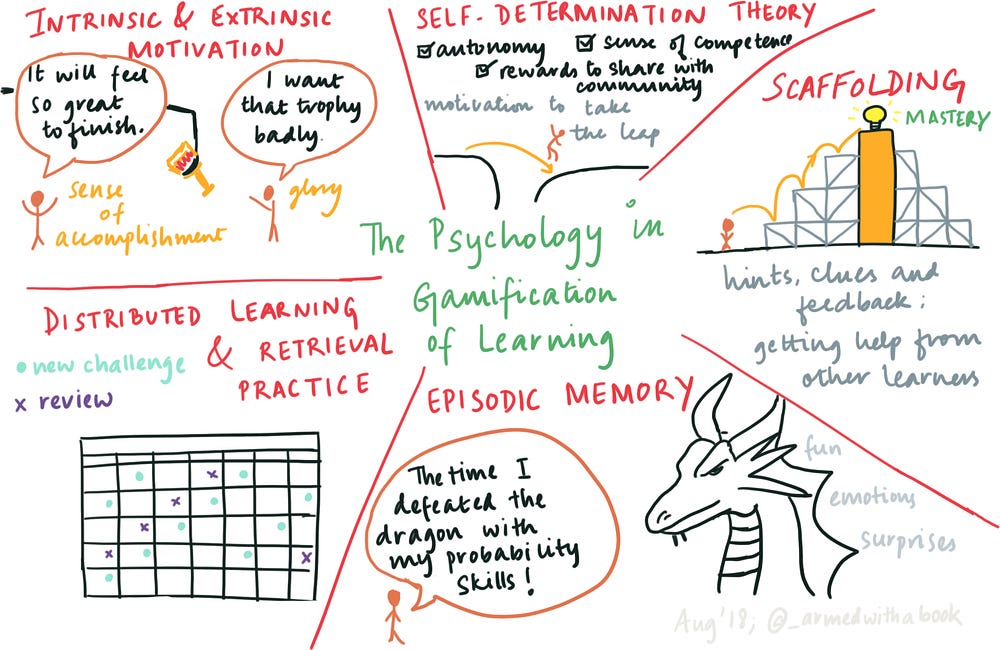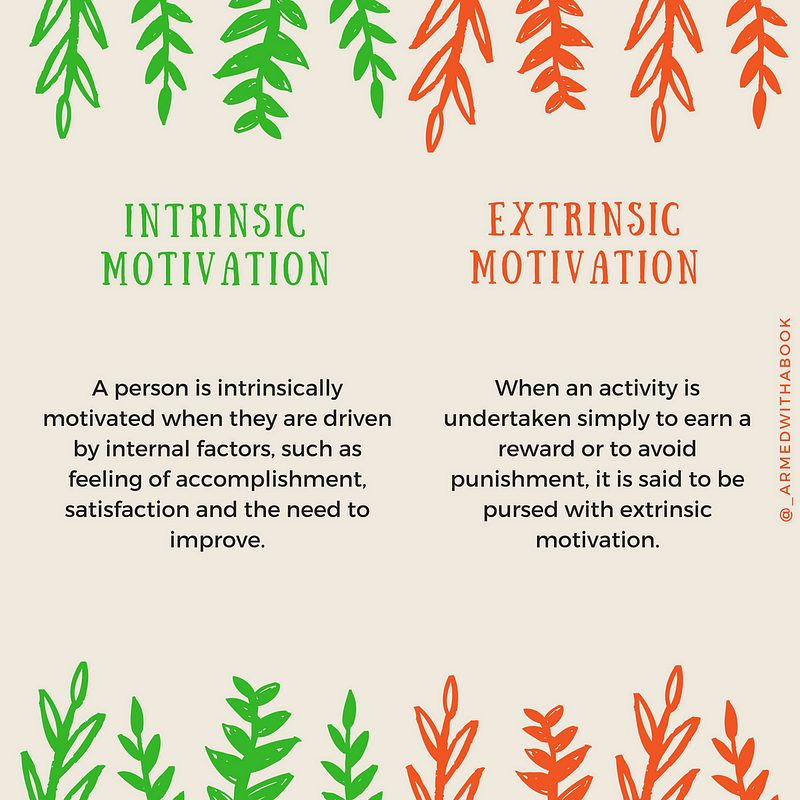Gamification refers to incorporating elements of games in the classroom. This can range from encouraging competition among the students, making them take part in activities that allow them to earn points, overcoming a challenge or receiving a badge. Game-based learning, refers to learning using an actual game for teaching knowledge and skills to students (Kapp, 2012). The game can be a traditional board game, an educational video game, an online game, etc.
The educational technology industry has jumped on this opportunity to build games for learning purposes or incorporate gaming concepts into education.
- Websites like Duolingo for teaching language and KnowRe for Math education ease learning at different grade and knowledge levels of students (Editorial team, 2013).
- Classcraft is a Quebec based company started by a Grade 11 Physics teacher that allows educators to customize their own gaming environments to use in class. Educator Ginger Schwartz recently shared why and how she adopted Classcraft in her classroom.
I have been curious about gamification and game-based learning for a while now and hence, I decided to dedicate my time to understanding the concept of gaming in learning better. Karl Kapp’s online course, Gamification of Learning, on Lynda.com, provides an excellent overview to gamification, its types, educational theories behind it as well as a thorough dive into the elements that teachers can incorporate into their classroom that will facilitate learning through a game. Considerations and best practices for gamifying the classroom were abound!
In this article, I focus on how theories in education support gamification. I think there isn’t a more convincing argument for gamifying your classroom because it takes into account so many elements of good teaching!
Most of what I have shared here is based on my notes from the course and I highly recommend you to take it when you have some time, especially if, like me, you are new to adding the touch of games to your classroom. I have also provided links to materials that would add to what I have described here.
What is gamification?
We all grow up playing games. Whether it is tic-tac-toe or Snakes and ladders, video games like Mario Kart, or outdoor games like Cricket and Hopscotch, we have each experienced some form of game in our lives. Games are fun and lead to rich engagement and motivated players.

When we bring one or more of these elements into the classroom, it is gamification. Game mechanics are the actions and activities that the player must undertake throughout the game.
Gamification is taking these elements and mechanics and applying them to non-traditional environments.
To bring gamification into the classroom, one must use game thinking. This involves applying the game mechanics to non-game situations, the classroom for instance, such that the learning environment encourages action on behalf of the player and leads to engagement. In my article on Empowerment and Engagement, I had mentioned the Engagement Taxonomy.
Engagement and Empowerment: How to make them happen?
Taking action, whether by responding, solving, modifying or constructing something, all lead to active engagement in the content. A good game as well as a good implementation of gamification has challenges, risks and meaningful outcomes. Thus, it provides a reason to take these actions and keep the learner engaged.
Types of Gamification
There are two kinds of gamification and neither of them need technology in the classroom.

Currently, in the Computers camp that I volunteer at, I am using jeopardy to review computer concepts. This is an instance of structural gamification. I have presented the content in such a way that it aligns with the rules of the game.
One can have a combination of the two types as well. For example, I want to gamify my Math classroom. To do this, I can add an underlying story, giving characters and purpose to my students’ avatars. That would be content gamification. My questions, in this case, would be rooted in the story itself. At the same time, I can use scoring elements and leaderboards, and have my students work in pairs or teams. This represents structural gamification. It is not related to the content, but how the game functions by itself.
Theory behind the Practice
Kapp elaborates upon the seven concepts from education that play an important role in the development of the learner. One or more of these can be present in the gamified classroom.

Scaffolding
The theory around scaffolding is closely related to Vgyotsky’s Zone of Developments. As I mention in my article on scaffolding, if we want a student to achieve the learning outcome which is new to them and out of their reach, we can build scaffolds or supporting structures to help the student get to the learning outcome. Scaffolds are educational strategies and techniques such as modeling and working with peers, continuous feedback and assessments, that help move learners from their current level of knowledge to the next one. These strategies give the student the confidence to tackle harder tasks and feel a sense of accomplishment.
Two important characteristics of scaffolds apply in gamification and games:
- It is a collaborative interaction with someone who is more knowledgeable. — Hints and feedback are provided throughout games whether in the form of “Try again” or a help box or “check the book” which allows the learner to increase their knowledge at a steady pace and ask for help through the interface or in person.
- It operates in the zone of proximal development. The student is provided support and help only for the skills that are needed to solve a task which is just a little out of his/her reach. — Along with the options I mentioned earlier, there are also rewards for doing well. This means as one attains certain levels of the skill, they get to know as well as the game gets harder. In the Math game I will be building, the number of Math concepts to be applied might increase as students get familiar with using the new ones they have learned.
When I was first learning about scaffolding, I didn’t even make these connections but when I thought about the time I have played Mario Kart, I found all these characteristics were present! The interaction was with the computer players that were doing great in the race. I had not completely mastered using the chance boxes (the ones with question marks) to my advantage (my bananas went many places), yet after watching the computer players use them, it become easier to throw them in their way. As I got more competent in playing the game, I didn’t need to watch other characters anymore, nor did I need toad to put me back on the road, partly because I don’t fall off as much! I also became willing to try the harder cups.
How can we ensure that we are using scaffolding during gamification?
- Providing hints and clues when the learner gets stuck is one way to incorporate scaffolding. It helps the student continue their learning without being stuck on something for too long. A good gamified classroom has these in place.
- When learners have a way to narrow their choices of answers, for example, using life line, it works as a scaffold. This is because some of the answers get eliminated for them and they can focus on the choices which are left.
- As learners progress, the frequency and availability of hints and clues should be withdrawn. The hints and chances disappear as players become better at what they do. Once the level is won, the learner will most likely not see the related hints again in a different level.
- To make the learning experience less frustrating, and in this way, more engaging, let learners seek help from other learners and computer characters, if any.
Self-Determination Theory
This is the theory of motivation. People are motivated when:
(1) They have a sense of control, i.e., autonomy. When people can predict and control the outcome of what they are doing, they are motivated to make it what they want.
(2) They feel competent in what they are doing. As a person’s skills increase, so does their confidence to achieve something and make it happen.
(3) They want to relate to others. We all want to be accepted and this is a motivation factor.
The things we do make us a part of communities that do the same thing.
How can we ensure that our learners are motivated in the gamified environment?
- When learners have choices and are able to make decisions about their path they want to take in their learning, they will be more motivated. For example, a Math teacher I know divides his practice sets into four levels of difficulty — Beginner, Intermediate, Expert and Advanced. Students can choose any of the four levels and move up from there. This motivates them to solve the type of set they have chosen as well as try harder ones when they succeed.
- Establishing progress of tasks from simple to complex is helpful too. Similar to scaffolding, when a student is able to complete a simple task successfully, he will likely feel more competent and willing to try a slightly more difficult task. In terms of the practice set levels example, once a student masters the Intermedia level, he would be more likely to try the Expert practice questions.
- Celebrating progress is another motivating factor. There is so much to learn and we can only learn some part of it at any given time. By celebrating a day’s work or celebrating the completion of a level or quest in the gamified classroom, students feel a sense of accomplishment and that every little act matters.
- Opportunities to show off the rewards are also important. There was a time in my teenage years when I loved playing the game Temple Run. I would take a screenshot of my highscore and share it with friends. I was part of the game community and being able to compete and share simultaneously led me to play the game even more.
Intrinsic and Extrinsic Motivation

When a learner masters new content or something they thought they were not going to be good that, it leads to intrinsic motivation and they realize they have control over how they learn and if they can do this, they can tackle other problems too. On the other hand, playing games just to earn badges or more points rather than for fun or because we like to be engrossed in the game environment are all examples of being extrinsically motivated.
An excellent resource on Motivation by the American Psychology Association.
Intrinsic and extrinsic motivation are not polar opposites. They coexist together in most educational settings.
I believe this to be true: think about grades and the accolades one gets when they come first in their class in an exam, for example, or at the end of the year. There are all kinds of students in the class. For some, studying is a means to pass the exam. Thus, they are extrinsically motivated. For others, studying is a way to learn more deeply about the content and understand it better, something that might not be possible in the classroom because everyone has a different pace of learning. This is intrinsic motivation. As you might have realized, grades are a gamification strategy in themselves.
What are some best practices with regards to motivation in the gamified classroom?
- Strive for a balance between extrinsic and intrinsic motivators. Points and rewards are extrinsic in nature while feedback leads to intrinsic motivation.
- A beginner task can have more extrinsic value. As the difficulty increases and the skills or learning objectives met via the task increases, feedback and sense of accomplishment can play an important role in helping the learner persevere.
- Whenever possible, combine intrinsic and extrinsic motivators. This is because different learners may approach the content differently. Having both kinds of motivators ensures that all variety of learners are catered to.
Distributed Learning and Retrieval Practice
One of the reasons I really enjoyed the online course on gamification was because the 4 hours of instruction were divided into six chapters consisting of a couple of 3–6 min videos. This allowed me to pick up content where I had left off easily as well as review specific parts of the course if need be. This is known as distributed learning, when a learner studies a little bit of the content at a time over a long period of time rather than cramming it all at once (as students often do the night before the exam). Distributed learning allows for deeper processing because learner fatigue is reduced and confusions can be addressed in time before new content is introduced.
Retrieval practice refers to testing or quizzing knowledge to reinforce learning. In Math, for example, we are often told to practice regularly, not just the new concepts we are learning but also previously learned concepts. I remember during my high school years about midway through the year, I used to practice questions from chapters we had covered in the beginning. This was retrieval practice because it helped me recall prior knowledge and solidify it in my mind.
A further resource on this topic is this article by Kapp himself.
What are effective ways to use distributed learning and retrieval practice in gamification?
- When new content is revealed after completing all of the prior content or having mastered a set percentage of the prior content, it helps in distributed learning. This way, learners do not get overwhelmed by the amount of work they have to do, even if they are fun quizzes and quests. It also gives time to leaners who learn at different speeds.
- Distributing content in quizzes and questions over time helps in retrieval practice. The game should allow learners to review older concepts from time to time. In the gamified classroom, the learning objectives still have to be met and the game should offer ways to review knowledge from time to time.
Episodic Memory
Memories that contain information about life experiences, usually associated with a particular time or place and are typically tied to emotions are called episodic memories.
A recent episodic memory for me is when I encountered a cockroach. I could paint a picture with words describing the time of the night it was, where this terrifying insect was sitting, the thoughts that crossed my mind as I debated whether to kill it or to somehow catch it and toss it outside my home. In a span of less than a minute, there is so much that happened!
When I think of episodic memories, I always imagine them to be moments when time stretched for longer than it was supposed to be. There is emotion, sense of smell, touch, sight and more, not to mention the brain that is trying very hard to figure out the next move. Though I have many such moments in video games like Mario Kart, especially when I have been playing with friends who are as good at it as me or when time is running out, there are fewer moments like this in education. As a student, one memory is playing jeopardy in a class. I was excited and engaged. As a team, we had to be the fastest to sound the buzzer otherwise we would not be able to answer at all. The learning goals were also clear in this case because we were reviewing the content we had just learned.
I love playing jeopardy with my students too. What else can I do to help them create more episodic memories?
- Methods that add fun and emotions are helpful as emotions contribute to episodic memories.
- When two things that do not go together are juxtaposed, we tend to remember them better. Kapp gives the example of zombies and retail.
- We do not like revisiting memories that caused pain or humiliation. Hence, it is important to ensure that losing and incorrect steps in the game do not have dramatic effects.
- Unexpected surprises are another way to peak interest and remember the underlying content and situation better.
For further reading, check out this article on Very Well Mind.
Conclusion
As a student of psychology, I am curious about how humans learn.
My experiences as a learner help me make connections to the theories I encounter and help me think deeply about where I want my students to be as learners.
Gamification is a different approach to teaching from the traditional classroom. However, with the increase in technology in our world, the exposure of students to video games at an early age and the movement in education to empower students rather than have them passively engage in the content, gamification is something I look forward to bringing in my classroom.
How do you practice gamification in your classroom? Which of these educational theories were you applying but were unaware of their presence? I would love to hear from you! Tweet to me at @_armedwithabook or contact me here.
References
Editorial Team, EdTech Review (2013, May). 7 Good Examples of Gamification in Education. EdTechReview. Retrieved from http://edtechreview.in/news/324-examples-gamification-in-education
Kapp, K. M. (2012). The gamification of learning and instruction: game-based methods and strategies for training and education. John Wiley & Sons.
Kapp’s online course on Lynda.com: Gamification of Learning.

Be First to Comment